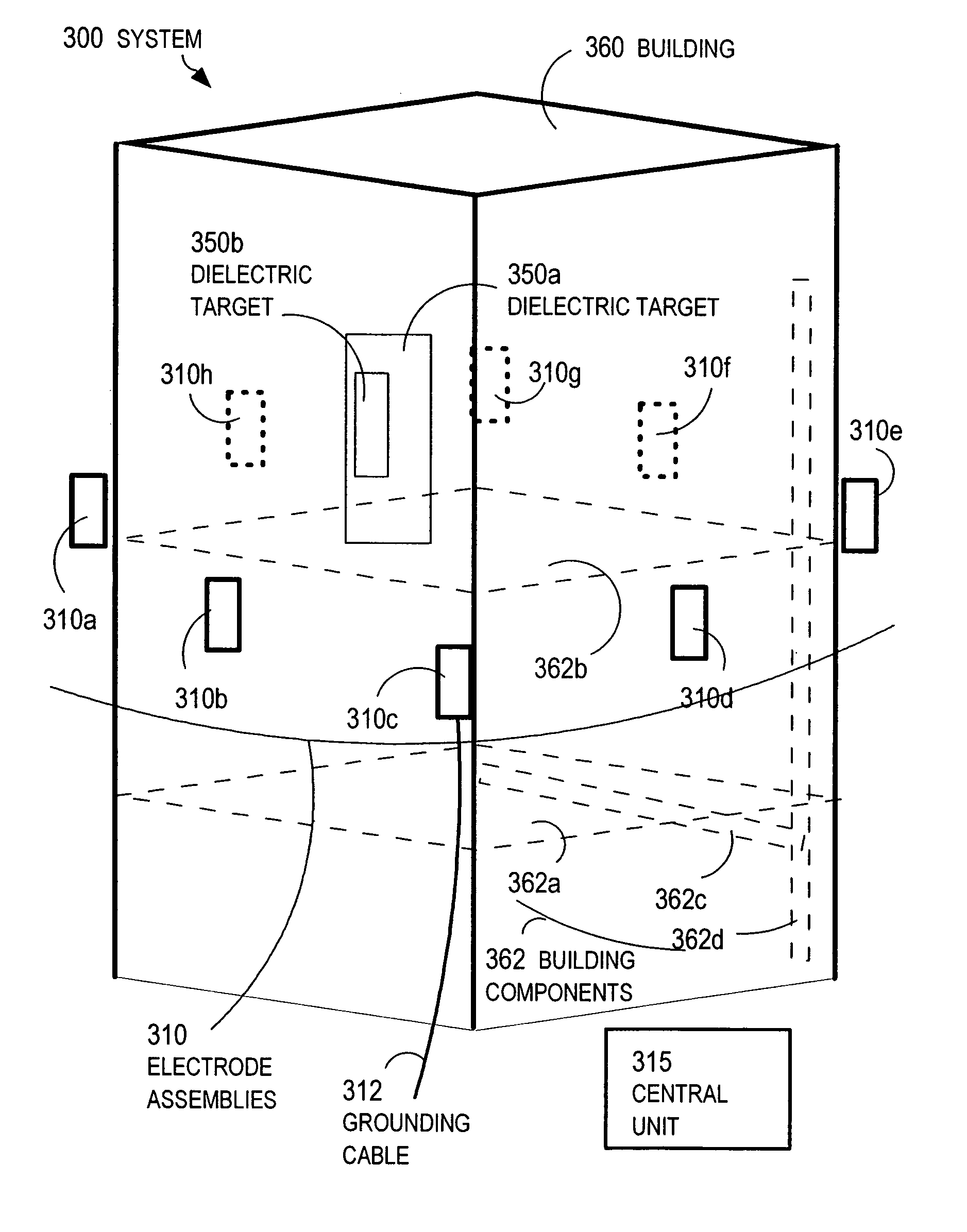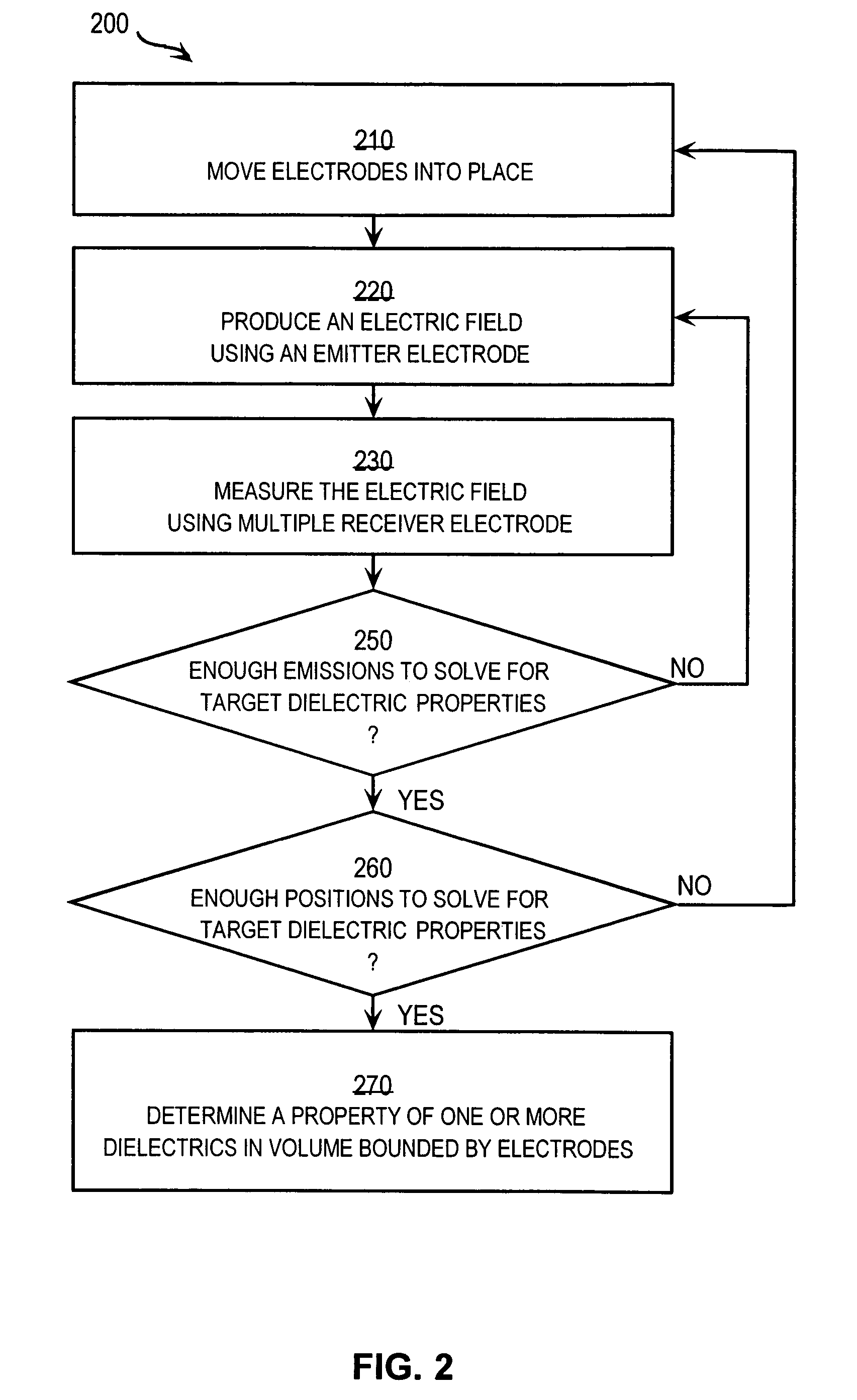Techniques for building-scale electrostatic tomography
a technology of electrostatic tomography and building scale, applied in the field of electrostatic tomography, can solve the problems of ineffective infrared, acoustic and radiation systems, ineffective infrared sensors, and few sensor technologies that effectively image the interior of building structures or densely foliated expanses,
- Summary
- Abstract
- Description
- Claims
- Application Information
AI Technical Summary
Benefits of technology
Problems solved by technology
Method used
Image
Examples
embodiment 380
[0118]FIG. 3C is a block diagram that illustrates an electrode assembly, according to an embodiment 380. The electrode assembly 380 includes a power supply 381, an electrode 386, an emitter circuit 387 and a receiver circuit 388. In addition, the electrode assembly 380 includes a communication system 382, a positioning system 383, a processor 385, and a movement mechanism 384.
[0119]The power supply 381 provides power for the emitter circuit 367, receiver circuit 388, processor 385, communication system 382 and positioning system 383. Any power supply known in the art may be used, including any electrical power supply. Although shown as a separate component in FIG. 3C, in other embodiments the power supply 381 is part of one or more of the other components. In the illustrated embodiment, the movement mechanism 384 includes a separate power supply for a different kind of power. In other embodiments, the movement mechanism is powered by power supply 381.
[0120]In the illustrate embodime...
embodiment 390
[0131]FIG. 3D is a block diagram that illustrates a central unit, according to an embodiment 390. The central unit 390 includes a power supply 391, a communication system 392, a positioning system 393, a processor 395, and a display 396.
[0132]The power supply 391 provides power for the other components. Any power supply known in the art may be used, including any electrical power supply. Although shown as a separate component in FIG. 3C, in other embodiments the power supply 391 is part of one or more of the other components.
[0133]The communication system 392 is a component that receives information from the electrode assemblies 310, such as electrode assembly 380. Any method known in the art may be used for the communication system, including tethered and wireless communications systems using radio, optical or other transmission signals. For example, the communication system 392 receives data indicating the electric potential measured by the receiver circuit 388 on electrode assemb...
PUM
| Property | Measurement | Unit |
|---|---|---|
| distances | aaaaa | aaaaa |
| dielectric constant | aaaaa | aaaaa |
| dielectric constants | aaaaa | aaaaa |
Abstract
Description
Claims
Application Information
 Login to View More
Login to View More - R&D
- Intellectual Property
- Life Sciences
- Materials
- Tech Scout
- Unparalleled Data Quality
- Higher Quality Content
- 60% Fewer Hallucinations
Browse by: Latest US Patents, China's latest patents, Technical Efficacy Thesaurus, Application Domain, Technology Topic, Popular Technical Reports.
© 2025 PatSnap. All rights reserved.Legal|Privacy policy|Modern Slavery Act Transparency Statement|Sitemap|About US| Contact US: help@patsnap.com



